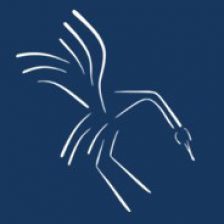Inside CRANE
CRANE e-Newsletter
Timothy P. Harrison
I am very pleased to announce the resumption of the CRANE Insider, our ‘in-house’ e-news communications platform. The CRANE Insider will include monthly reports and stories on the many projects and activities being conducted by researchers throughout the CRANE network, communicate upcoming conferences, workshops, and lectures of CRANE researchers, and celebrate the publications and research achievements of the CRANE research community. As the network of CRANE projects and researchers continues to grow and expand, we wish to maintain an active and open communications ‘channel’ that keeps everyone informed of our collective research activities and progress. We hope that each and everyone will communicate their news or announcements, so that the larger CRANE community remains informed, and all can benefit from our collective successes.
To help launch the CRANE Insider, I am very pleased to report that SSHRC has formally approved our most recent institutional partner, the University of Central Florida, with Scott Branting as Co-Investigator. Scott is engaged in an exciting array of projects developing truly innovative archaeological applications in the fields of remote sensing (including the deployment of satellites to document cultural heritage), 3D data capture and modelling. As Jaime Weinman, our new CRANE writer, reports, CRANE will be partnering in Scott’s current project, DATCH, to equip archaeologists with augmented reality (AR) headsets designed to achieve total data capture in real time in the field.
In future issues of the CRANE Insider, we will provide updates on the progress of ongoing CRANE projects, and report on exciting new initiatives being developed, such as the Human-Environment Interaction Project, an ambitious initiative to build on CRANE’s current RCM Downscaling Project, and a developing partnership with Cambridge University Press to launch a Cambridge Elements series on the City in the Ancient Mediterranean World (in the tradition of the Cambridge Ancient History series), that will link CRANE data with ‘state-of-the-field’ publications (or Elements) tracing the historical development of the city in the ancient Mediterranean world through time and space.
As the CRANE network continues to grow, I anticipate that our communications will expand as well, both internally and with the broader research community and the public, and it will engage a wider range of media platforms. In the meantime, PLEASE share with us any news or announcements you might have.
I look forward to hearing from you,

